My Favorite Month in Oklahoma Thus Far
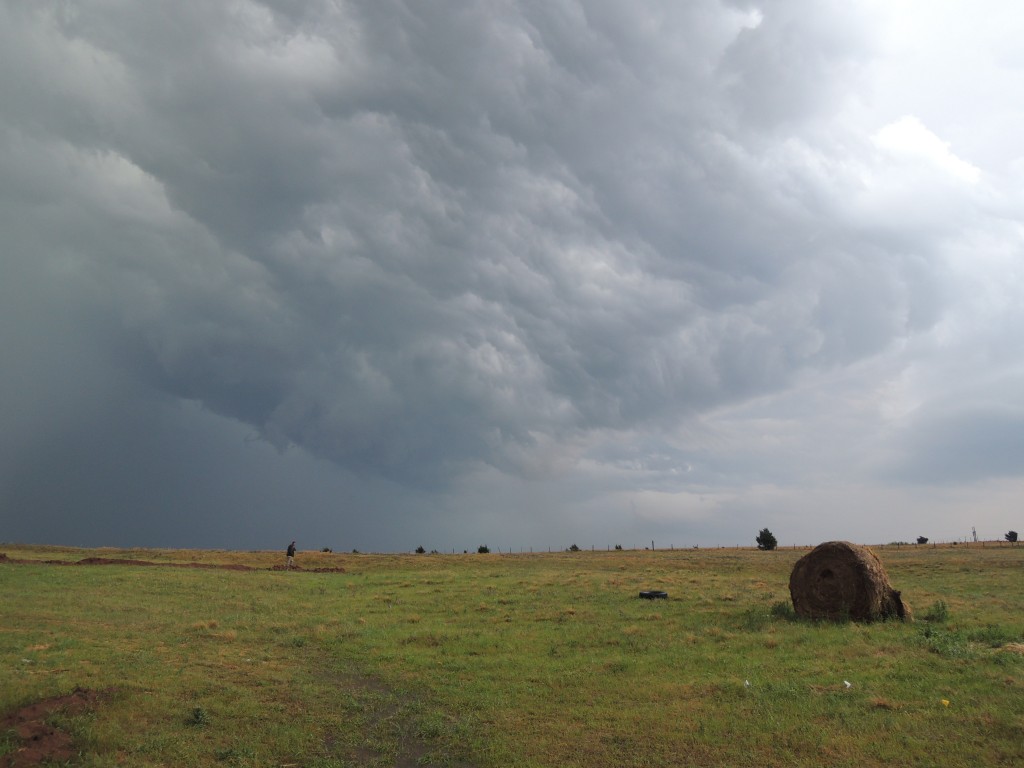
Being 9 months pregnant on our farm has not been very fun. Bending over is required for nearly every task, I can’t lift the sledgehammer anymore, and camping chairs are NOT made for pregnant ladies. I could go on complaining about the discomfort of our lifestyle, but you don’t want to hear about that. You want to hear about the good things and the progress we’ve made, right? Alright, I’ll save you the griping.
First of all, May is the best month in Oklahoma thus far. Maybe June will be nice too, I don’t know, but May is full of mild temperatures with very little wind and lots of rain. Rain that reminds me of my beloved Illinois. The landscape is so green right now, and the skies so big and full of intricate cloud formations, its as if Bob Ross threw up all over the place. Happy little clouds all over the horizon bring rain to our plants, fill our swales, and freshen the air, as well as make me feel overall good about farming. So many veggies that I was sure were going to die have recovered and are more vibrant than ever.

Ok, a tiny bit of bad news: we experimented with letting the guineas out of their tire-brooder a couple of times and on the last time, they didn’t come back. They did make it through the car trip I talked about last time. We are constantly reminded that we need to order more every time a grasshopper nymph chews the leaves off of some freshly transplanted vegetable.
I think it may have been May 8th, a big rain event dropped what seemed like 2 inches in an hour, though the weather data tells me it was only .30 inches. It came fast and brought some hail. Aaron was so excited to see his earthworks doing what they’re meant to do. The runoff from the hill above gave us enough water to nearly fill the biggest swale to the brim. The keyhole gardens were actually totally full, completely immersing the tomatoes and onions underwater and nearly bringing me to tears. But, behold! This soil has superior drainage and the water managed to drain in less than 30 minutes, leaving the plants unharmed. In fact, the hail that damaged many of the plants on the hugelkultur, left the keyhole plants unscathed because they were protected by 8 inches of water! The chicken coop flipped, as usual, freeing the soggy chickens to eat some of our seeds and seedlings. None of them were harmed, and the coop is fine, again. It is now staked down and has been secure since.

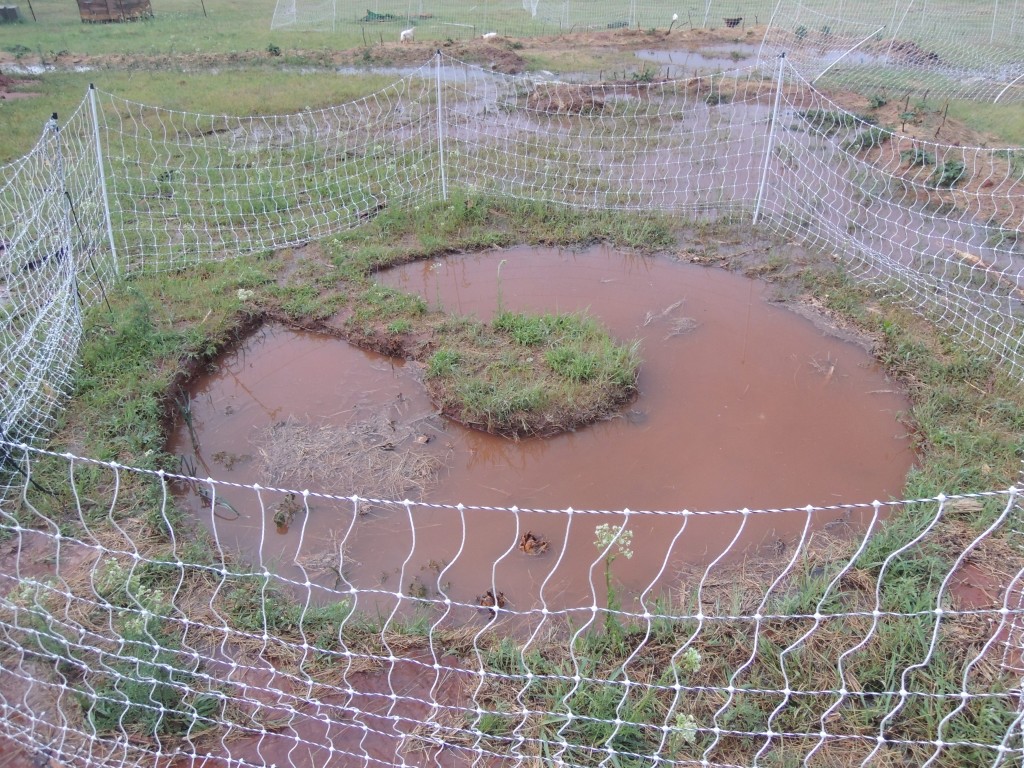
The entire Memorial day weekend was rainy as well. A couple of days were spent sitting in the trailer catching up on the garden journal, while Julius zoomed through the 7th Harry Potter book. He has managed to read the entire series in his 7th year. I didn’t read a single chapter book until I was at least 9. He won some awards for having the most accelerated reading (AR) points at his school. This means he was able to pass the comprehension test associated with the books he read more than any other kid from Kindergarten through 6th grade! We are sure proud of our extraordinary reader. Now that school is out, we are out on the farm the majority of the week, heading back to the in-laws for showers and to catch up on our online lives, i.e., writing this blog. We have yet to get some sort of internet connection out here. When he’s not reading, there is still plenty for a 7 year old boy to do on a growing farm. He got himself an orphaned bull calf to care for, which means that he needs to bottle feed it every morning and evening. He has decided to keep the name his grandpa gave it, which may not last long; Shorty. Azaylia, the best dog in the world, has taken to caring for him as well. She cleans him and keeps him company. Julius also moves cows with his dad, helps pull nails out of pallets, and plays with the dogs and cat. His latest project is experimenting with making cob. But most of all, he enjoys laying in the hammock, reading about Harry’s magical adventures.
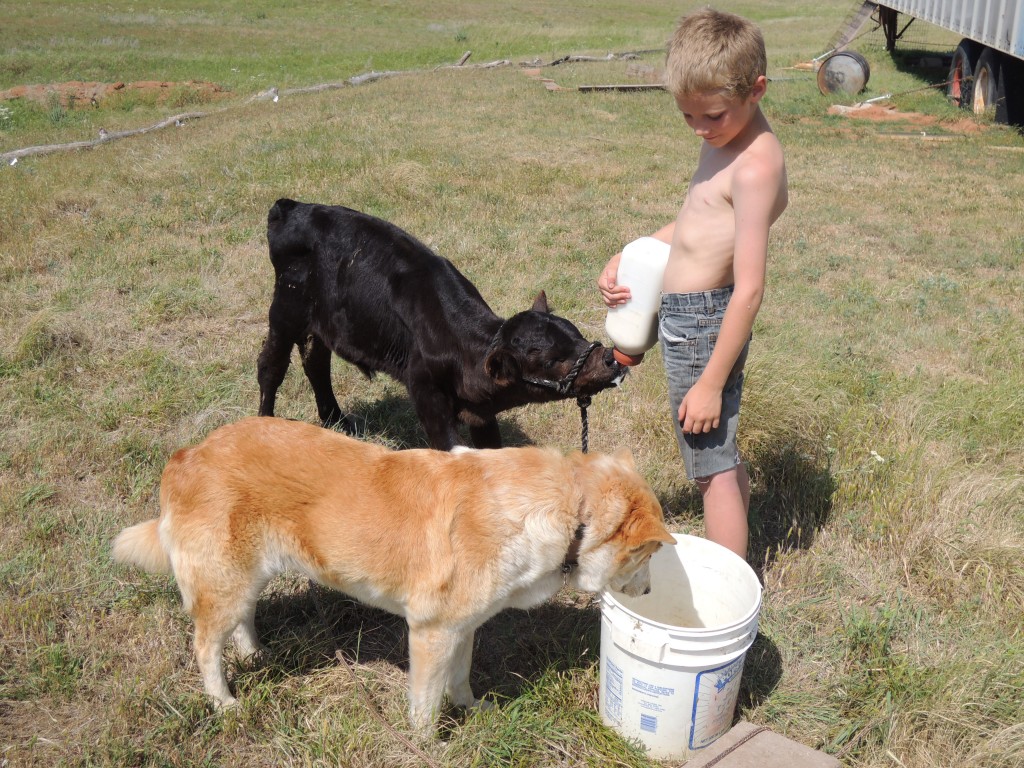

Other exciting news is that even living off grid, you can have a healthy at-home water birth. Remember all those cubies I told you about? Well, I really wanted to have an outdoor waterbirth, but didn’t want to purchase an expensive blow-up one online that inevitably would get popped by a sand burr so, remembering our farm friends’ aquaponic system, I thought we should construct one of those. It would be a birthing tank before it was a fish tank.
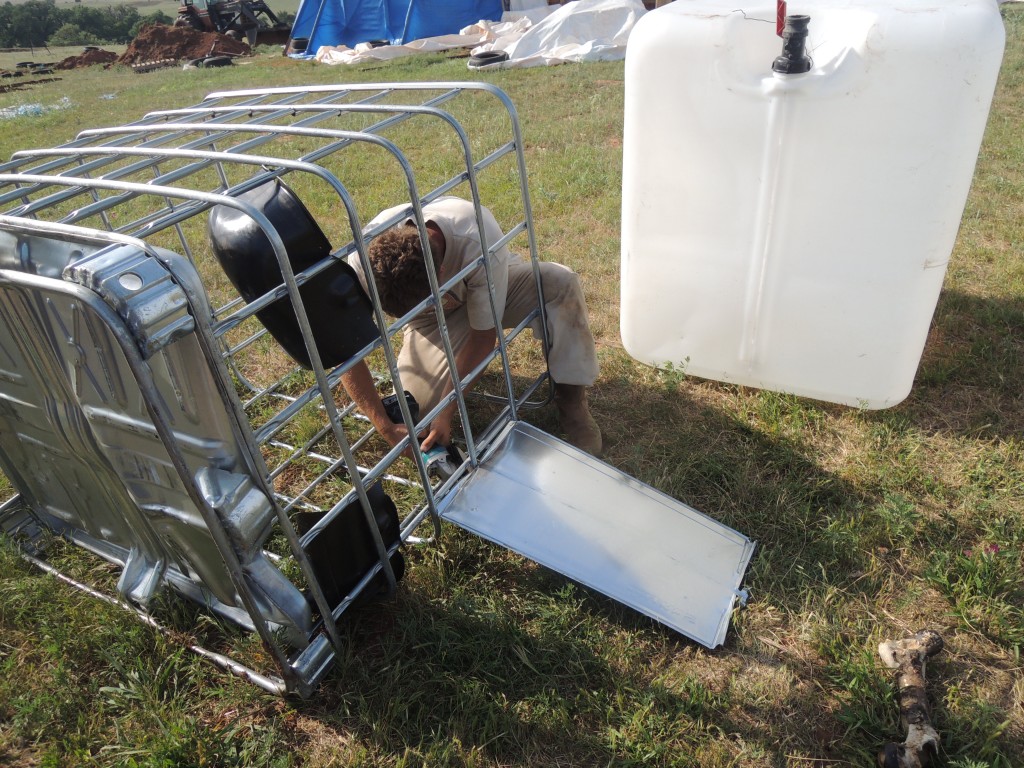
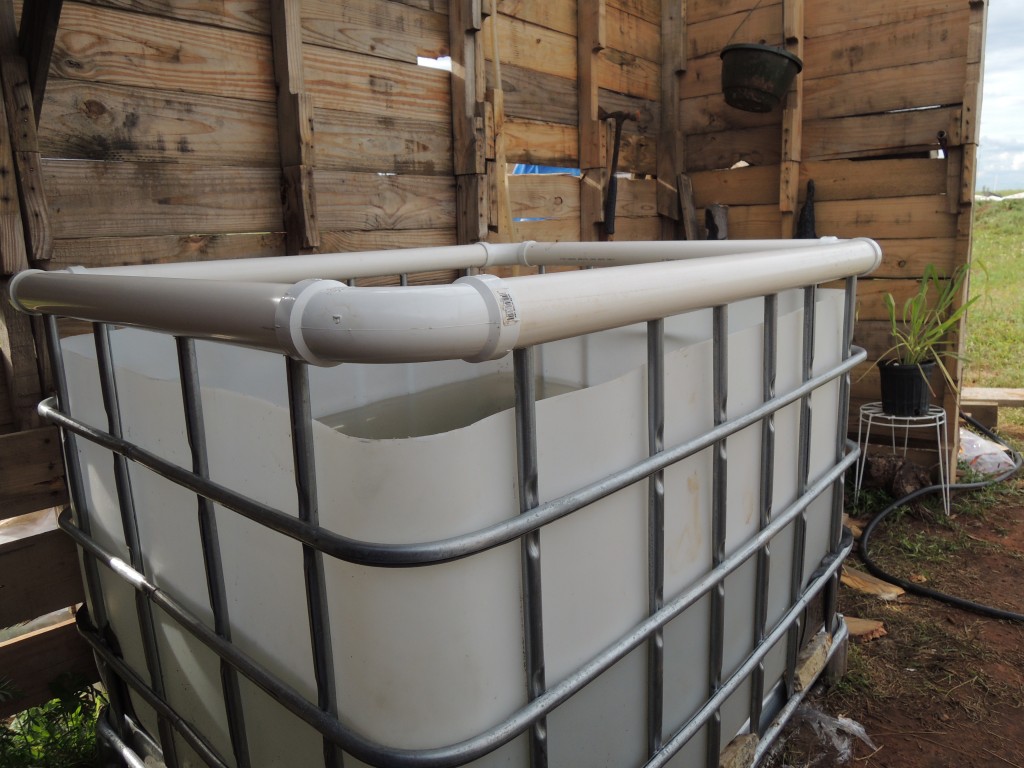
Julius and Aaron are also working on some cob to insulate the copper coil that will heat the tub. If you’ll remember from a previous post, cob is a mixture of sand, clay, straw, and water that can be applied to walls, such as on our earthbag home, and can be molded into whatever shapes you fancy.


Speaking of our home, process is slow but steady. We have to be sure to cover our progress during rain events, so work has been intermittent this May. Not to mention my decreased energy and climbing abilities. Nonetheless, we have managed to construct an arch form for between the first two domes. In ancient Rome, according to Earthbag Building by Kaki Hunter, the first building codes were put in place to ensure safe buildings. They did this by using the eye-for-an-eye concept. The builder was required to stand underneath the arch while the form was being pulled out. In the photo below, you can see the shorter bags on the left and right of the form that will continue up over the form. A keystone bag will be place top and center that will support the arch.
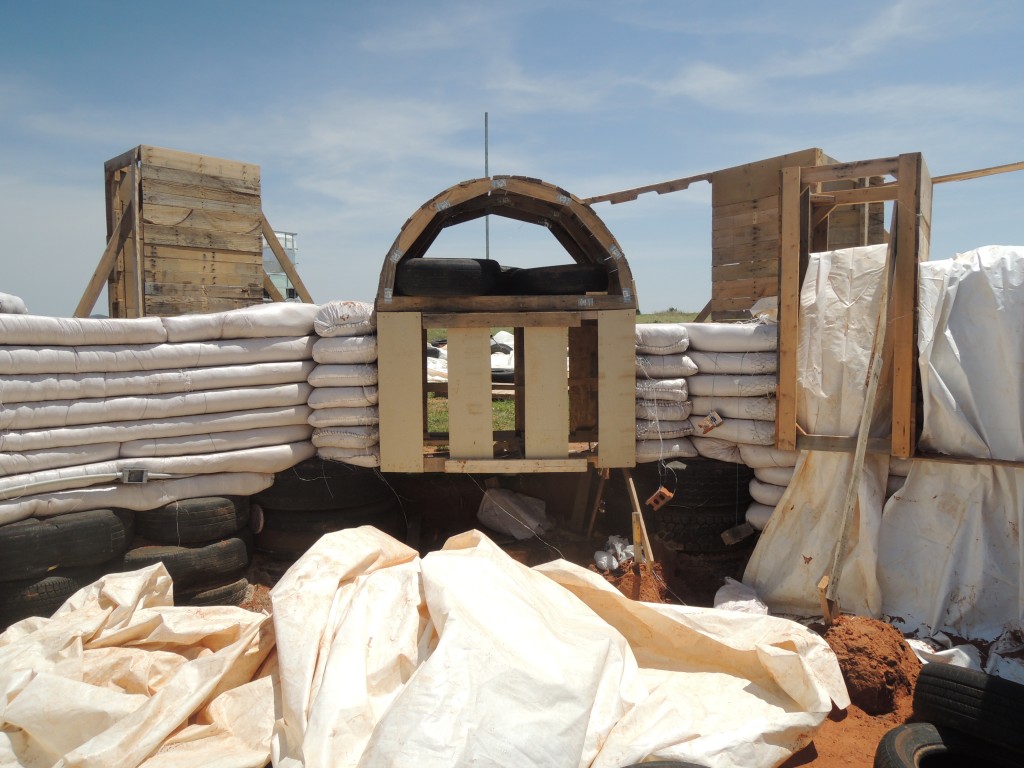

I planted our three sisters sunken keyhole garden this May as well. I made 9 mounds for the corn and 9 mounds for the squash. The corn mounds have 5 plants each, for proper pollination. The squash mounds have 4-5 seeds per mound. I used the following seed varieties:
Bloody Butcher Corn from Seed Saver’s Exchange
Spaghetti Squash from Johnny’s
Boule d’Or (Golden Perfection) Melon from Baker Creek
Chinese Green Noodle Bean from Baker Creek
Rattlesnake Pole Bean from Baker Creek
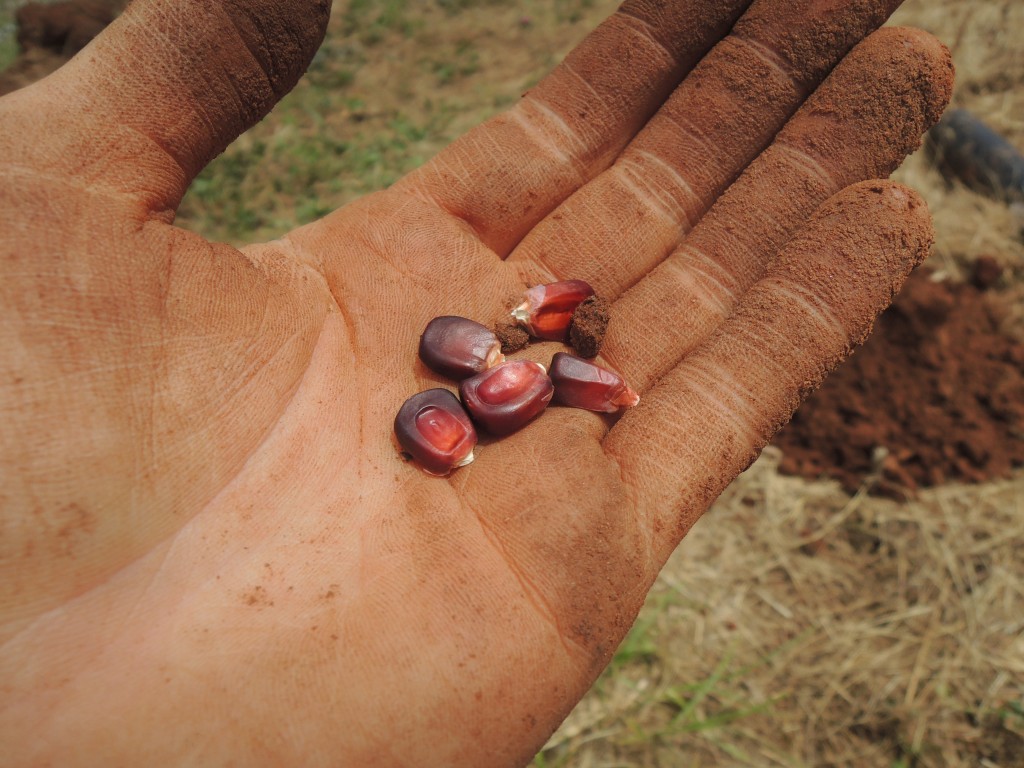
The beans are planted about 10 to a mound just around the base of each corn mound. The idea, if you are not familiar, is that the corn grows tall, fast. It is a heavy feeder, requiring lots of nitrogen. The beans (climbing) that surround the corn, fix nitrogen in the soil and use the corn as a trellis. The squash grow large, vining leaves that shade the ground and help to suppress weeds and retain soil moisture. Having the keyhole garden shape sunken in the ground also helps with moisture retention.

The only problem I have with this style of gardening is that as a pregnant lady, I can’t reach down into the soil without straining. This may be problematic for others with disabilities. The three-sisters guild was used by native Americans for who knows how long. I’ll keep you updated on this method as it progresses. Currently, it is my favorite garden bed to tend and watch over, despite the discomfort.

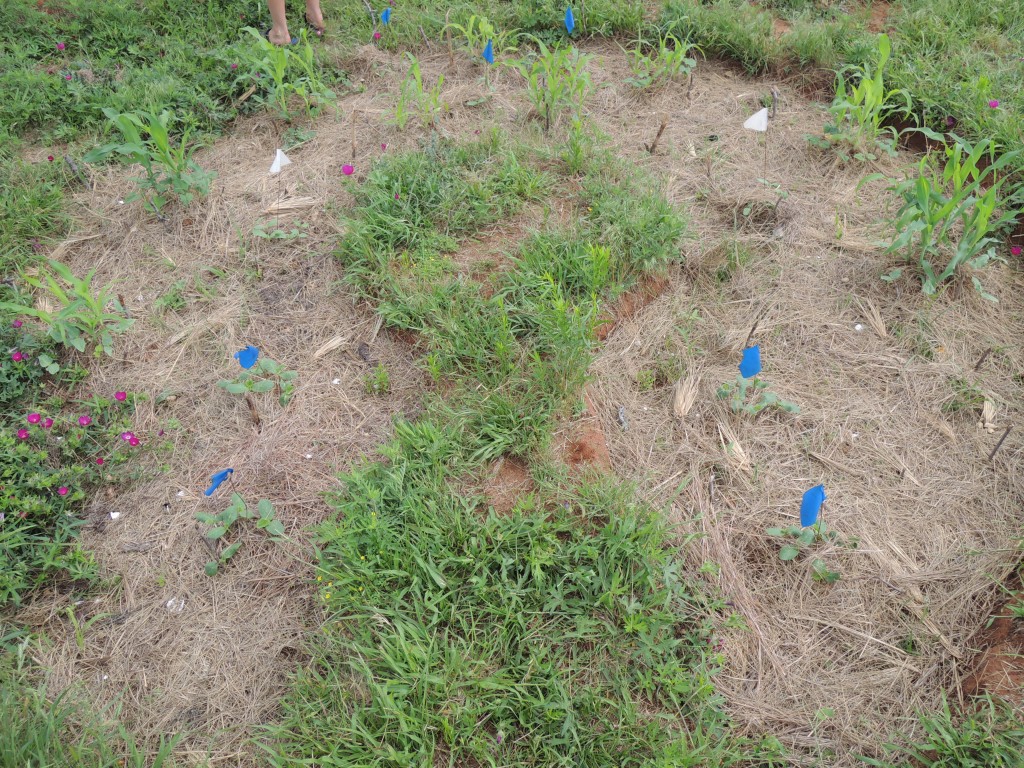
The Three Sisters Garden is a great concept to teach children about polycultures and over-yielding. And because corn, beans, and squash are fairly easy to grow, this method can be a great way to introduce gardening to young minds. Another great thing to to in the garden with kids, I’ve discovered, is to collect these pesky little guys:
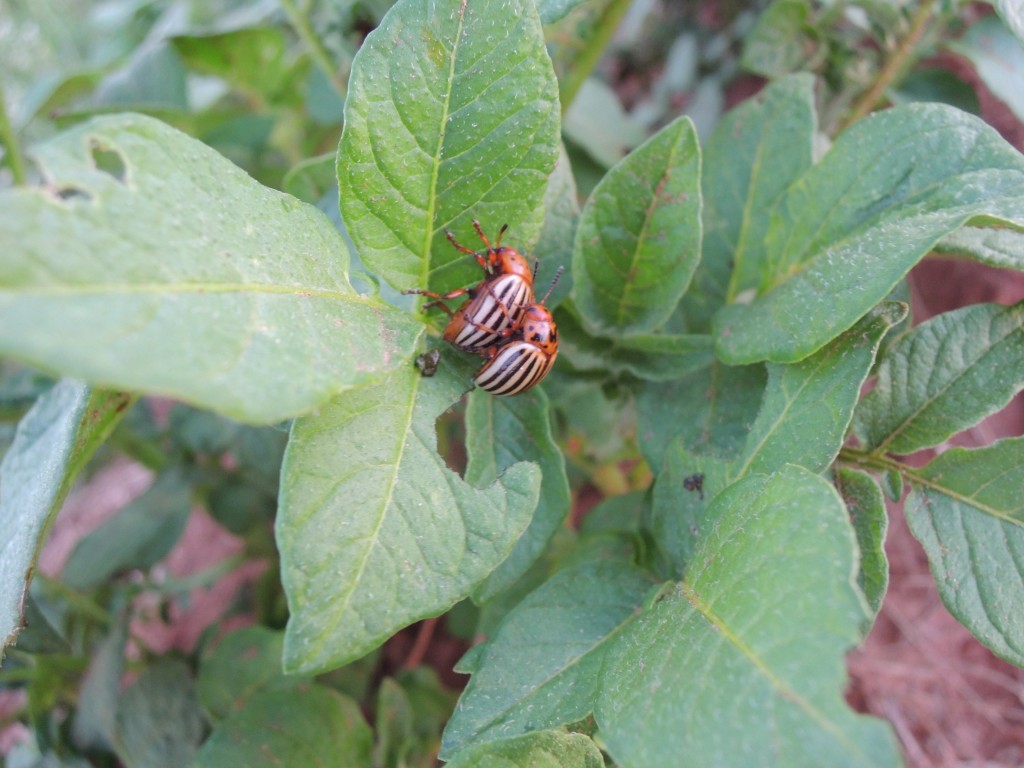
These guys will defoliate your entire plants if they are left to their own devices. Instead of using chemicals, we send out our son to collect the buggers. They don’t bite, don’t fly, and are slow, making them easy to catch.
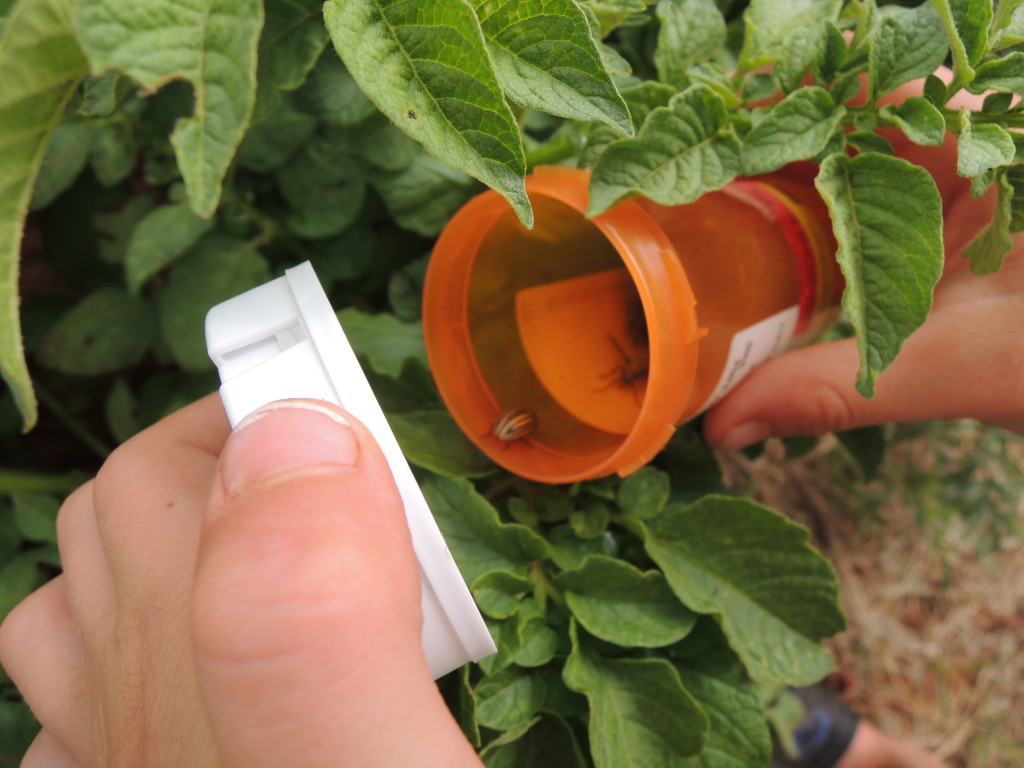
Then, after collecting a whole slew of them, we release them to the chickens, who gobble them up in a few seconds!

Our Oklahoma homesteading adventure has rolled along now for an entire year. We moved here last June. Sometimes I think that we haven’t really accomplished a whole lot for an entire year, and other times, I think, Wow! look at all that we’ve done! We have altered the landscape tremendously to hold more water, designed and partly constructed our longer-than-lifetime-lasting home, and begun growing food that will produce nutrients for many years to come. We also grew a new addition to the family, well almost (I’m 39 weeks along). We found sources for pallets, scrap granite, newspaper, and used tires, all of which are free and less than an hour drive. We’ve learned a lot about growing food in this hot dry land, and we’ve kept track of it all on our website and facebook page. You have to step back and look at your accomplishments sometimes to know that you’re headed in the right direction. I know we’re doing the right thing here. It just takes time and perseverance.
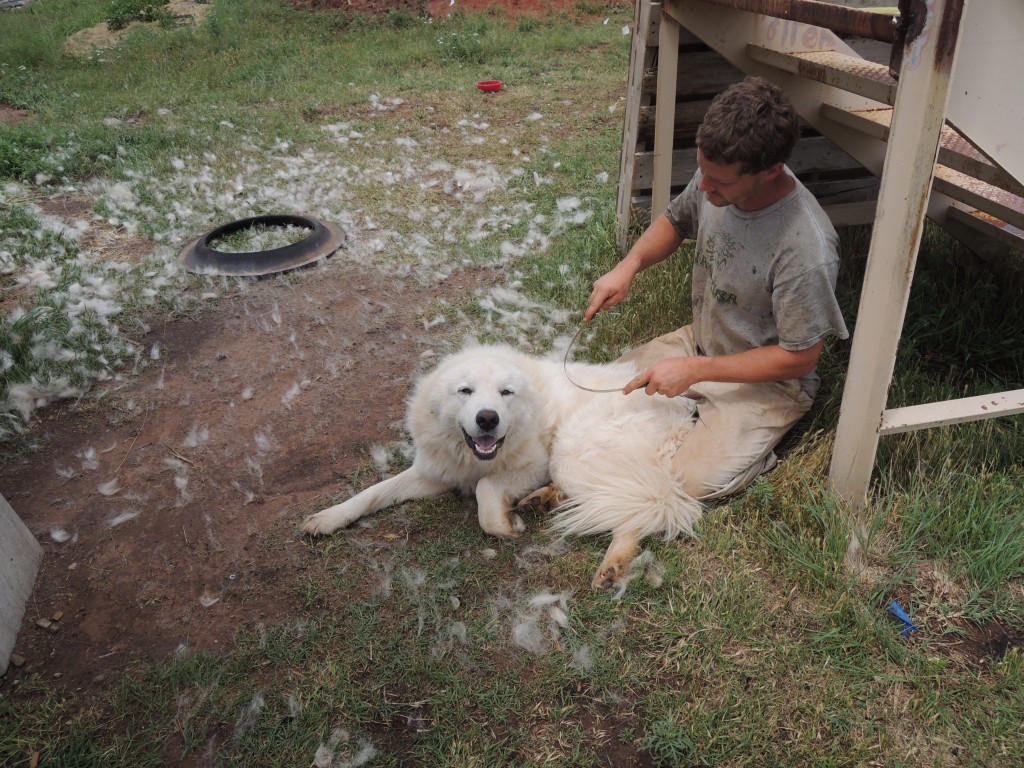








1 thought on “Reflections on May, 2014”
having disabilities myself… the low end of moderate issues. Some days I can manage as well as anyone else can… other days I’m confined to a chair, but most days I’m breaking even.
so, much of my garden is slightly below knee level – still a bit of a pain on the back while standing, but more practical if I have to sit or use a wheelchair.
It, also, leaves to the variety of what could be practically planted…
although, when I was living out west, I did create a few ‘drop boxes’ for some trees I had ; about two and half to three feet lower than ground level. Though depending on the local weather, one might need to go as far as five feet or so, and fill that extra footage with some loose rock or insulating materials (nothing like you would with walls, but just creating a lattice down there with some cordwood or pallets; just loosely packed into the dirt) to reduce flooding or freezing and promote better drainage in general..
with the standing boxes, it’s easier to head the traditional route.. be it with earthbags, cob, cordwood, etc.
the most applicable plans available (for those that need them) are less gardening boxes than they are for fountains… just ignoring the pump and replacing the water with soil.
I usually add some poultry wire (about the only thing I’d ever use it for, preferring hardware cloth for our birds) along the bottom… and again, I might add in some loose rock (like volcano rock… nothing substantial, just toss a few here and there) as well as building in a couple “drains” (you toss a bit of cloth or mesh over the box end of ’em to help keep dirt out of there… but regardless, it’s still going to get clogged… which isn’t big deal.. it’s just to help with that extra drainage and create some breathing room; if you’re in area that freezes and don’t have them in a green house, well, you could go a step further and actually take the pipes up above the top soil, metal/clay piping better in this scenario… as you could use them as heating conduits, whether running hot water down the top end or making a pint size stove (or basically making a steam kettle) from the bottom end; frequently needed when you’re trying to grow / keep alive something probably won’t survive in your region.)
If I ever end up moving to a bigger plot of land, one of my first projects is going to be building a proper greenhouse… my own little tree museum, a californian orchard, raising that middle finger to oklahoma and all its wacky weather. (it sounds like a lot, and kind of insane, but like all of this, it really isn’t… especially since solar converters have really come down in price – it doesn’t take that much external energy.
And you know, it’s kind of a wonder there aren’t more ‘steam’ projects.. especially with recycled water…(even if things are still relatively too unpredictable here to gauge whether or not you could rely on rain/snow to serve towards both energy/heating needs as well as carrying for ones’ plant life) because honestly, one could actually work that route through little else than steam piping through a barn like structure or large green house.. thick vinyl sheeting (like the stuff you’d set at a bottom of a pond) helps significantly during cold weather, flash freezing.. albeit the excess humidity creates its own problems…
its a hassle, but yet its more practical than using a traditional stove or oven to warm the place… particularly when one has tropical deigns. Even Germany, would let the weather get them down.. using similar gimmicks and literally just pouring sand in a parking lot to have a ‘beach party’ in some of those most screwed up weather… albeit, it was likely more the boredom between classes. (still, less than 1000 to attend university (or one of the technical colleges) there, only paying for housing (they have good deals for students, year around, in general, less than 400 usd, a month, but there’s quite a bit of alternative housing options too, in the smaller towns, even stripping that down to about 160 a month.. and living off street food at about 3.60 a day.. well, for the frugal crowd, and of course, going for the right vendors instead of the mcdonalds variety)… just… practical… than anything we have remotely here.
but I digress… oh yeah, it was the arguments on the use of steam and other alternatives, entertaining there, from the necessity with the influx of refugees to the homesteader movement they have there… I mostly saw it in operation with dairy farms, particularly artisan cheesemakers, more than other ag… but their sustainable agricultural movement (government pushed) is worth exploring… so many avenues to explore.